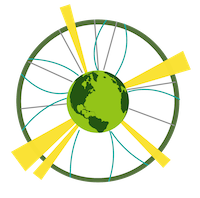Speaker
Description
To maximize the potential of dedicated detectors for long-lived particles (LLPs), they must be placed in locations that are optimal for our physics goals. We propose an innovative concept: a dedicated transverse detector for LLPs, called DELIGHT, with its positioning and size optimized for both FCC-ee and FCC-hh. This unique approach would enable the FCC to enhance resource utilization and promote sustainability in high-energy physics (HEP). Moreover, we believe that utilizing pile-up (PU) as an additional resource is also a step towards sustainability. While the high levels of PU in FCC-hh are anticipated to present significant challenges in searches for light new physics, we offer a different perspective. Instead of viewing PU merely as an obstacle, we emphasize its potential advantages in the search for light LLPs arising from $B$ or $D$ hadron decays at future hadron colliders. This alternative perspective might increase our chances of discovering light new physics sooner, thereby reducing the overall run time of future colliders.

